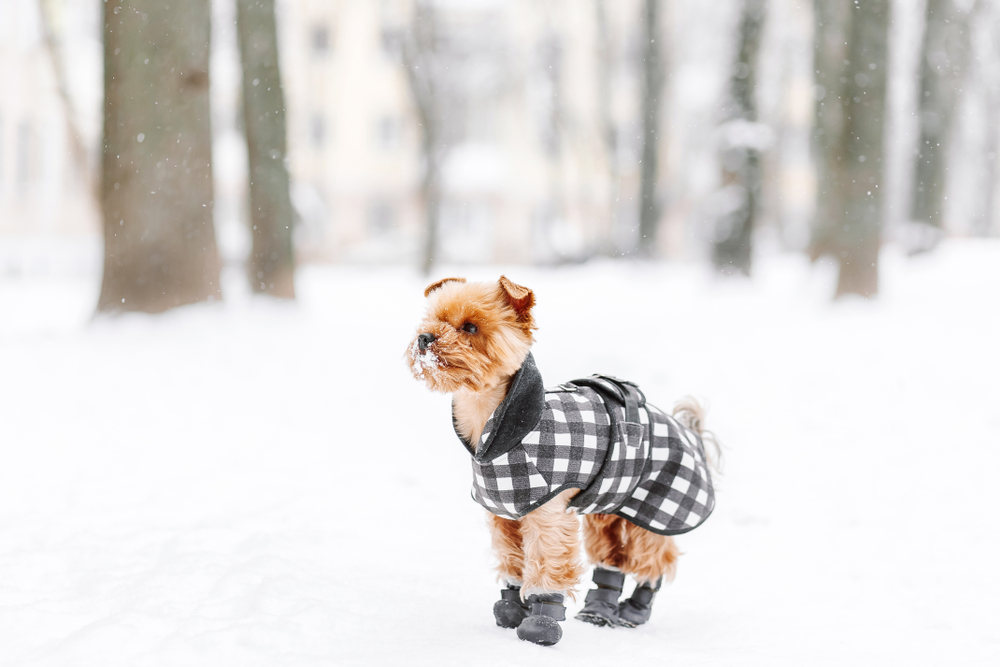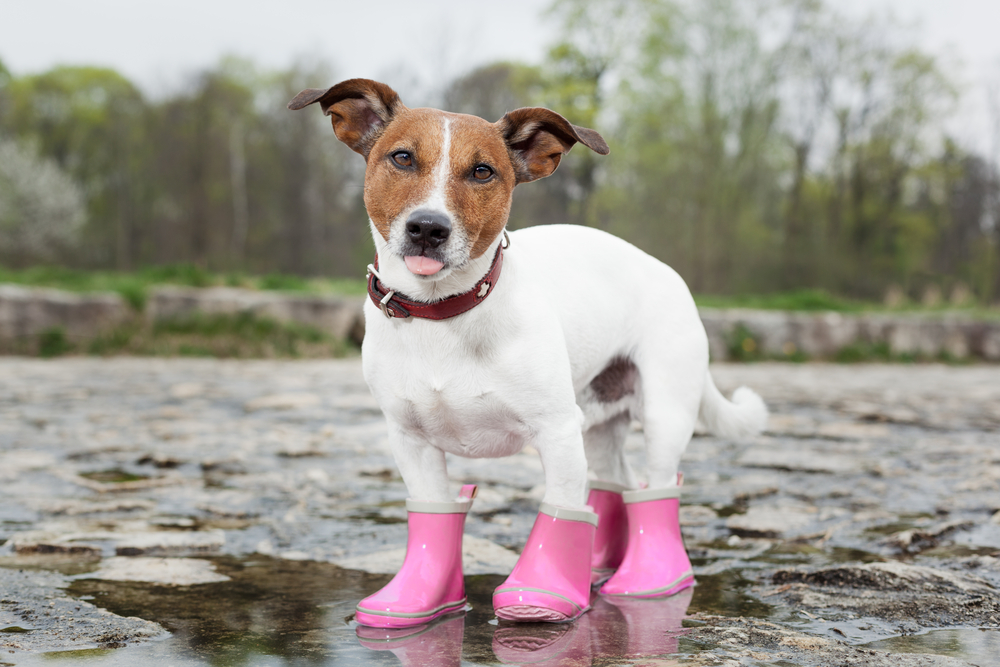As the winter months approach, it’s time to start upgrading your dog’s winter wardrobe to combat frigid weather, ice, and snow. Not even northern breeds like Siberian huskies and Alaskan malamutes are impervious to the cold. But finding the perfect waterproof boots isn’t always easy, which has many pet parents turning to DIY solutions. Not only will you be able to ensure the perfect fit, but you’ll also save some money. Have you ever wondered how to make waterproof dog boots? We’ll walk you through it step by step.
Why your dog needs waterproof boots
Waterproof dog boots are designed to keep your pup’s feet warm, dry, and protected. According to the American Kennel Club, you should take precautions against “snow, ice, salt, and ice melt chemicals.” Chemicals used to deice wintry roads are toxic, as are road salts. And chemicals aren’t the only danger to your pup’s paws. Snow and ice can form compact lumps between the toes, which may cut into her feet. Boots also give your pooch extra traction on slippery surfaces, a must-have in rainy or icy weather. Cooler weather goes hand in hand with dry, itchy skin, but a good pair of waterproof bootees will help prevent your pooch from dealing with uncomfortable, cracked paws. Best of all, you can remove your pup’s boots at the door, so she won’t track rain and ice through the house. Stay with us if you’re ready to try your hand at making your own waterproof dog boots.
Make Chloe Mackintosh’s waterproof dog boots
When Martha Stewart, the domestic goddess herself, makes a recommendation, you know it’s going to be good. You’ll need:
- A measuring tape (or a ruler)
- Faux leather
- Fabric scissors
- Thick patching fabric
- Pinking shears
- A sewing machine
- A leather-sewing needle
- All-purpose thread
- Elastic trim
Step 1:
After measuring your dog’s paws, cut out 4 strips of faux leather with a 1-inch allowance to accommodate the seams. You can’t add any fabric once you’ve made that first cut, but you can always trim it down later if it’s too large.
Step 2:
Cut out 4 small patches from the patching fabric using the pinking shears. The patches will form the soles of your dog’s bootees, providing extra warmth and traction for her paws.
Step 3:
Stitch the soles onto the faux leather using your sewing machine. You can also complete this step by hand if you’re more comfortable hand-stitching — or if you don’t have a sewing machine. (You could also probably use leather glue.)

Step 4:
Fold down and pin a half-inch hem at the top of each boot. Use the elastic trim to measure your dog’s ankles and cut to ensure a snug (but comfortable) fit. Folding the elastic in half, pin it in place beneath each hem and sew the elastic in place.
Step 5:
Fold the bootees with the “wrong” side of the fabric facing upward, and then trim the corner off to create a rounded toe box.
Step 6:
Sew the perimeter of the boot closed while leaving the top part open. You’ll want to use curved stitches when you reach the toe box to reinforce the round shape. (Your bootees should resemble a sock at this point.) Turn your boots inside out, and you’re ready to try them on for size.
Try this handy YouTube tutorial
If that sounds like a little too much work and not enough guidance, you’re in luck. YouTube is home to a plethora of instructional videos, including this video on how to make dog boots. To start off, you’ll need a dog-boots pattern suitable for your dog’s size. You’ll also need the following supplies:
- Fleece
- Velcro
- Faux leather (or genuine leather)
- Leather glue
- Water-resistant fabric of your choice
- Pencil and paper
- A ruler (or measuring tape)
- A sewing machine (or a needle and thread)
- Fabric scissors
- Clothespins or binder clips
Choosing thick, durable materials makes the boots ideal for winter, while the Velcro closures allow you to get your dog ready in a snap. Fleece is naturally water-resistant, so it will keep your pup’s feet warm and dry. The addition of a leather (or faux leather) bottom provides a waterproof grip, allowing your pooch to find traction on wet, slippery surfaces without allowing the water to reach her paws. Once you’ve gathered all your supplies, you can follow along with the tutorial.

If finding the perfect pair of waterproof boots for your pooch is easier said than done, it’s time to put on your DIY hat and get cracking. Whether you rely on YouTube tutorials — or Wonder Puppy’s inventive method of turning duct tape into boots — there are countless options at your disposal. Making your own dog boots is more time-consuming than buying a pair, but you should be able to sew all four boots (not to mention brag about making them yourself) in under an hour.




